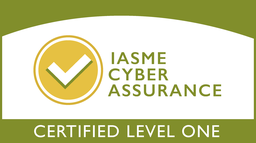The modern workplace is facing a crisis of stress.
The normal work environment can be stressful, but it’s usually manageable. However, the last few years have put increased pressure on workers and businesses, and the result is an epidemic of stress that is plaguing the modern workplace.
With job pressure and workplace culture becoming major issues, it’s important for managers to be able to identify signs of bullying, stress, and burnout, as well as offer support to their people.
The Challenges of Modern Workplaces
Employee wellbeing should be the primary focus of any organisation, but in recent times, that focus has shifted a little bit. It’s no longer the case that employees feel as protected or as comfortable in the workplace environment.
COVID-19 and the wave of work-from-home policies that came into place did little but create an isolationist feeling among workers. Many staff feel that they have been excluded from the workplace culture by being forced to work from home, and workplace bullying has also sprung up to a record high.
The result of all of this has been increased levels of stress with 74% of people reportedly unable to cope with the levels of stress that they experience in their lives. From a psychological safety aspect, the effects of stress result in 61% of people developing anxiety. Being over-worked and workplace bullying can drive many people into very dark places which is very worrying indeed.
Now is the time to introduce stress management techniques into the workplace.
The Role of Managers and Leaders in Combating Workplace Stress
So, when it comes to workplace stress and bullying, there is a degree of responsibility which must be put onto managers and leaders to try and prevent these problems from occurring.
Recognising the signs of burnout and stress is important. If a person is acting lethargic, unmotivated, manic, upset, anxious or quick to anger, they might be suffering from either stress or burnout.
This means running employee listening sessions to work with your team and make sure that they’re happy with what’s going on. Employee engagement is so important at any point but especially when trying to implement support for stress.
It’s also important to try and cultivate an atmosphere and workplace where staff feel safe speaking up about things which upset them. The only way in which we can all take a stand against bullying is by creating a place where speaking out is acceptable and encouraged.
It’s also a good idea to get employee feedback wherever you can to find out what more they feel could be done. This provides specific suggestions that come directly from staff. A good business usually runs employee engagement surveys anyway, but in this case, they become even more important.
Final Thoughts
Organisational health is a core part of any company, but it has never been more important to tackle the modern challenges we face surrounding stress and bullying.
A robust support system needs to be put in place to protect staff from harm and prevent a toxic workplace culture from developing. The modern employer needs to be compassionate and switched on to succeed.
Get your workplace culture in the right place with our most popular engagement tools - Free to download
The Definitive Guide to Workplace Bullying
Download the guide and learn how to create a zero tolerance workplace culture and give people a voice
Building a Successful Speak Up Culture in your organisation
Download our free e-book and start improving your organisational health
The Concise Guide to Engaging and Retaining Employees
Download our free e-book to find out how to engage and retain your top talent
Why Civility Matters
Download our infographic to share with your teams to highlight why civility matters
How we support healthy workplace cultures
Many employees are without a voice. And organisations are missing valuable insights into their organisational health.
WorkInConfidence helps organisations improve their company culture, engage and retain top talent and gain valuable insights for continual improvement and innovation.
Good organisational culture and active employee engagement can transform your business. We help facilitate trusted two-way communications, increase employee engagement, reduce risk and accelerate team performance.
Have the conversations, get the feedback, support your staff and make sure you train your leadership team well to be able to support and manage their people.




